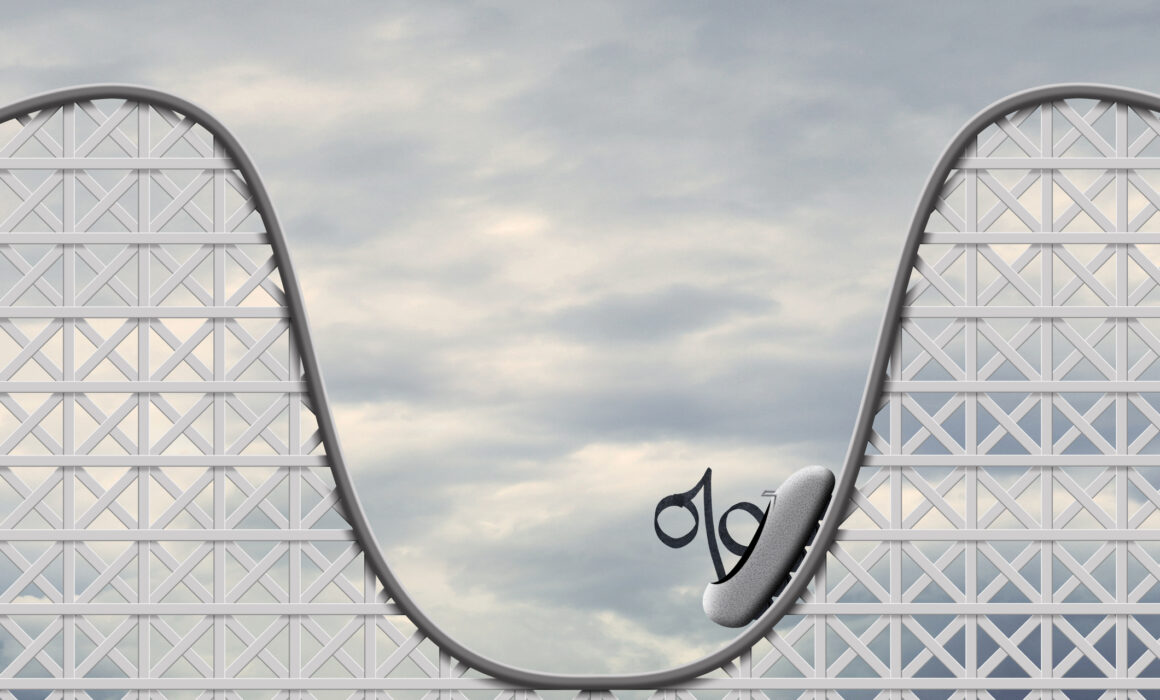Not everybody thinks about the economy every day, but lately I’d venture to say most people find themselves saying some form of, “why on earth is everything so expensive?” From groceries to electric bills to living expenses overall, it’s not uncommon to hear complaints and commiseration everywhere from online forums to casual conversation.
We keep hearing that record numbers of jobs are being added and unemployment is falling, so why does it feel like business is still slow? Let’s look at how interest rate cycles have affected what we’ve seen so far this year, and consider what we can expect for the rest of 2024.
Phase 1: Rate Increases
The Federal Reserve is the nation’s central bank whose role is to maintain stable prices and maximum employment. In simplest terms, the Fed has the power to slow an overheated economy by raising interest rates, or it can lower rates to encourage consumer spending and borrowing to stimulate a stagnant economy.
The economy has shown amazing resiliency the past couple years. The job market has done well, and compensation stats are up. We have to give the Fed a lot of credit for keeping things fairly stable because despite its aggressive posture over inflation, the economy has held up surprisingly well. According to a recent article in the Washington Post, the U.S. economy bounced back far stronger than anticipated after the pandemic recession: “Unemployment, at 3.8 percent, is in the longest stretch of near-record low jobless rates since 1970. Wages are going up. And crucially, families, businesses and governments are continuing to spend, keeping money sloshing through the economy.”
However, there’s been a massive contraction in business spending, and rates have been a major issue. The first big rate hike happened in April 2022, followed by several more. Rates that were held at close to 0% in early 2022 were up to 5.5% by the fall of 2023. The government has kept up their spending. Consumers have kept up their spending. But businesses? They’ve been the rational ones who have slowed or stopped spending. The rate increases were abrupt, and businesses reacted accordingly with hiring freezes and reductions in force. When employees left, many of those positions were not refilled.
Biden may not get more recognition for the positive indicator of increased jobs because many of them are blue collar or in sectors like hospitality. It may be because it’s been a precarious environment for the white-collar professional working class, especially earners in the $200k-$400k/year range. When those workers were laid off, we ended up with a huge pool of candidates in the market – far more than there are job openings.
Therefore, government and consumer spending has really shouldered the economy. In fact, the contraction in business spending is the highest I’ve seen in my career. This feels a bit like whiplash after the huge hiring wave that was a response to post-pandemic acceleration. That wave has completely receded.
Big technology (Google, Apple, Meta, etc.) is now talking about margins and operating expenses, which differs from the past when the focus was on growth. They’ve now reached scale and need to operate like more traditional companies. As a result, there’s been a massive recession in spending on areas like professional services, infrastructure, software investments and hiring.
Phase 2: Stabilization
We’re currently in Phase 2 of the rate cycle, which is characterized by stabilization. The Fed is saying the expected rate cuts may not happen at all this year, so we’re in a period of adjusting to the higher rates. We don’t expect to see rates go higher; they’re more likely to settle back around 3.5%.
At BlueSky, we’ve felt this business spending contraction in the direct hire side of the business, but our staffing and placement business has been strong because our clients still have work to get done. Consulting firms are still not doing much new hiring, but they are now backfilling roles that stood empty. We don’t expect to see consulting grow until Phase 3 of the cycle – a declining rate environment.
Phase 3: Rates Decline
Fears around stagflation – where prices rise while the economy cools – have been tossed around recently, but experts who delve deeper into the data agree that stagflation worries are misguided. Bank of America reported this week that, “the big-picture story of resilient spending growth should remain unaltered.”
As Claudia Sahm, chief economist at New Century Advisors, says, “You have to pick your head up and look at the context: We have an economy that’s still really working for consumers and businesses despite the fact that inflation is elevated and interest rates are higher than before the pandemic.”
So, when will we see rates decline? We can assume the Feds will have a more cautious approach to the incremental decrease in rates. The labor market was hotter this year than the Fed likely expected. We’re now in a post-pandemic hangover. The good news? We’ll likely feel great about the economy about a year from now.

Resources:
https://www.investopedia.com/terms/f/federalreservebank.asp
https://www.forbes.com/advisor/investing/fed-funds-rate-history/
https://finance.yahoo.com/news/why-us-isnt-facing-stagflation-233025006.html#
https://www.washingtonpost.com/business/2024/04/25/gdp-2024-economy-growth/

